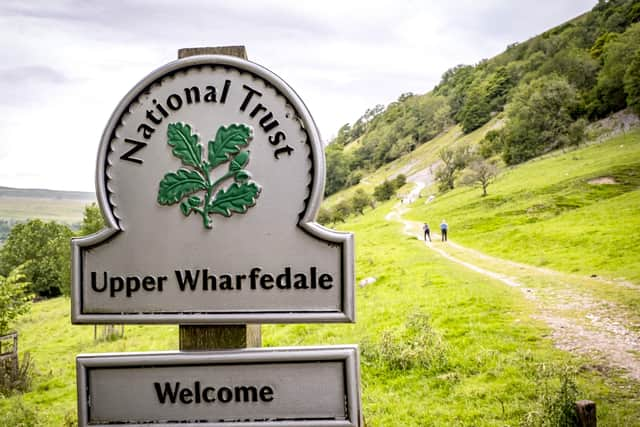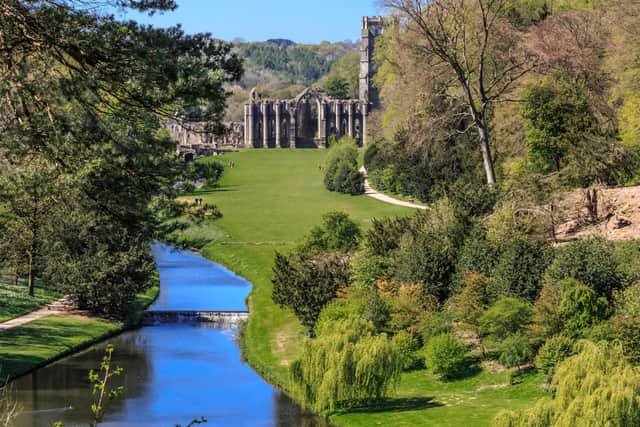We expect better from National Trust than this heritage hiatus – Jayne Dowle


We can still be proud of our history, heritage and landscape, even when all around us the world seems a frightening place and a rapidly approaching post-Brexit future fills us with collective trepidation.
Even with the restrictions imposed by the pandemic, many of us might venture to one of the National Trust’s 300 or so historic houses or visit gardens, woodlands or coastline under the organisation’s stewardship.
Advertisement
Hide AdAdvertisement
Hide AdWhether we contribute the annual membership fee – £72 for an individual – or turn up and pay at the gate, we have come to take access to sites and artefacts for granted.


However, as we admire the beautiful buildings, gaze at priceless paintings or enjoy walking through peaceful woodland, an unholy row is raging behind the scenes.
In what should have been its celebratory 125th year, this monument to all that is still great about Britain is mired in controversy.
As the NT battles to come to terms with the financial deficit caused by the closure of properties, gardens and parkland during the pandemic, 1,200 employees face redundancy to plug a £200m hole in its finances.
Advertisement
Hide AdAdvertisement
Hide AdThe predicted job losses, which would include expert curators, scholars and property managers, have already caused controversy, not just among the workforce but from members who fear that irreplaceable expertise will be thrown on the scrapheap. Some of these people may also lose their homes, as property managers often live on-site.


The NT’s entire top tier of art specialists, with expertise in such areas as textiles and furniture, could be replaced and almost all senior curatorial posts closed, it is reported. Staff will be invited to apply for new roles with titles such as “curator in repurposing historic houses”.
Someone needs to adjudicate – and fast: what about Oliver Dowden, Secretary of State for Culture, Media and Sport, hiding in the wings again?
Anyway, getting rid of paid staff puts further pressure on the NT’s pool of 70,000 volunteer guides.
Advertisement
Hide AdAdvertisement
Hide AdMany of these are elderly, so should be shielding themselves from coronavirus where possible. Permanent closure of properties is unthinkable but it may happen. And as anyone with any understanding of history knows, it is impossible to turn back the clock.
While job losses in any sector are inevitable collateral damage of the pandemic, there is also a battle going on for the heart and soul of the organisation.
A leaked memo posts a vision for the future of the NT which has set alarm bells ringing across the heritage sector. Apparently, the National Trust has taken the mind-blowing decision to “dial down” its traditional role as “a major national cultural institution”.
Rather than sitting beside the Tate galleries or the Victoria & Albert Museum, it will focus on hiring out its halls and providing a “gateway to the outdoors” for the public.
Advertisement
Hide AdAdvertisement
Hide AdThe memo attacks the NT’s “outdated mansion experience... serving a loyal but dwindling audience” and proposes an urgent review of the opening hours of properties, along with putting art and antiques collections into storage so rooms can be used to develop “new sources of experience-based income”. It’s considering how to, excuse the jargon, “flex our mansion offer”.
Here is the rub. Many of the NT’s nearly six million members want things to stay exactly as they are. They are, to put it bluntly, part of the problem, not the solution.
Visit a site and you might see what I mean. It’s all very lovely but rarely diverse or inclusive. So, yes, it does need to reach out to communities unfamiliar with all it has to offer. There is, however, no need to take a sledgehammer to the Coalport china. There should be no argument against modernisation but it needs to be done without imperilling properties, collections and livelihoods.
By playing to its strengths, and the reputation of its admirable tea-rooms, the National Trust has simply lost its direction and purpose in modern society.
Advertisement
Hide AdAdvertisement
Hide AdThis was surely the very opposite of what its founders, Victorian philanthropist Octavia Hill, senior civil servant Sir Robert Hunter and Canon Hardwicke Rawnsley, a celebrated clergyman who lived in the Lake District, would have wanted.
It really should become a truly democratic national treasure, not relegated to the attic of cultural life. As an artist, social reformer and activist, Hill was strongly influenced by the belief that good environments make better people – she built improved housing and campaigned to give ordinary people access to the countryside. She would surely have had some good ideas for how to bridge the divide.
Support The Yorkshire Post and become a subscriber today.
Your subscription will help us to continue to bring quality news to the people of Yorkshire. In return, you’ll see fewer ads on site, get free access to our app and receive exclusive members-only offers.
So, please - if you can - pay for our work. Just £5 per month is the starting point. If you think that which we are trying to achieve is worth more, you can pay us what you think we are worth. By doing so, you will be investing in something that is becoming increasingly rare. Independent journalism that cares less about right and left and more about right and wrong. Journalism you can trust.
Thank you
James Mitchinson
Editor
Comment Guidelines
National World encourages reader discussion on our stories. User feedback, insights and back-and-forth exchanges add a rich layer of context to reporting. Please review our Community Guidelines before commenting.